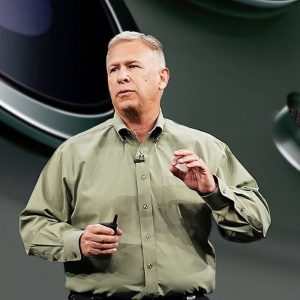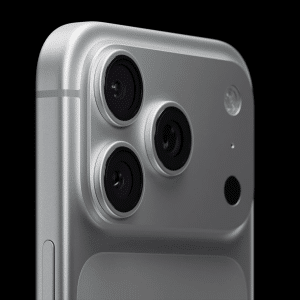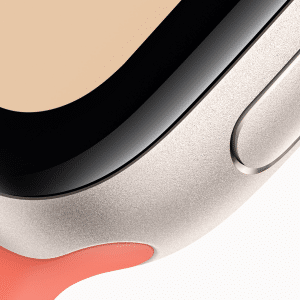It was nearly 4 a.m. when Steve Jobs’ gleaming private jet finally touched down. The lights at Memphis International Airport cast a halo of fluorescent gold around the $40 million, 15-seat Gulfstream as it completed its 1,800-mile journey from California, an overnight Hail Mary across three time zones. Waiting in a car on the tarmac that crisp March 2009 morning, Dr. James D. Eason greeted his famous patient, the reclusive tech icon known worldwide for the iPhone and decades of innovation. As head of transplant surgery at Methodist University Hospital Transplant Institute, Eason would perform a rare type of liver transplant on 54-year-old Jobs in the hours that followed, extending his life by 2 years and giving new life, too, to a bedeviling question of medical ethics.
Simply put, did Jobs, the iconic billionaire CEO of Apple Inc., the most visible organ transplant patient in the world, cut in line in Memphis?
It’s a simple question that frames an intensely complicated raging national debate over how money influences access to the best doctors and hospitals, or in this case, a precious transplanted organ.
“Transplants are a microcosm of the larger health care system,” said Gordon Bonnyman, a Nashville lawyer who, as the executive director of the Tennessee Justice Center, has led a series of often- unsatisfying skirmishes seeking better health care for the poor. “In my experience, (the poor) are grateful for what they get, whatever that is. They are not very good at asserting themselves. They do not expect, like Steve Jobs, to be pushing ahead to the head of the queue.
“If you don’t have the ‘do-re-mi,’ you’re not going to get quality care.”
Through a legal, little-known practice called multiple listing, Jobs doubled his odds by getting on waiting lists in California and Tennessee. Competition was too stiff back home in California, and Jobs, his wealth and fame notwithstanding, may have died waiting. But in mere weeks he jumped to the top of the list in Memphis, ahead of dozens of others.
Nearly 20 people die every day in the U.S. waiting for an organ, a simple function of supply and demand. Driven by those statistics, a fraction of those needing lifesaving transplants are landing spots on wait lists at two, sometimes more, transplant centers. Some travel thousands of miles to list at hospitals in different regions of the country in hopes of receiving a kidney, liver, heart or other organ. Their personal stories underpin national research that shows people willing – and able – to travel have a 74 percent higher chance of getting a liver. They’re paying tens of thousands of dollars for transportation, and that much or more for temporary housing, even before facing their share of the costs of a transplant that can top $500,000 over a lifetime.
Many are privileged; an analysis of data by The Commercial Appeal found nearly two-thirds of liver transplant candidates listed at hospitals in two or more regions live in ZIP codes where the median household income exceeds that of their home state. They may not have Jobs’ world-ranking wealth, but they do come from places such as Cabin John, Md., a bucolic community nestled along the Potomac River where the $186,875 median household income is more than 2 times the state median; or River Forest, Ill., an affluent Chicago suburb where three-fourths of adults older than 25 have a college degree; or Los Angeles’ privileged Encino community.
Others aren’t of such means; they get there through fundraising, finding the right insurance or marshaling family and community resources. A growing number are skipping multiple listing and simply relocating near a distant transplant hospital: moving across the country to live with relatives, to find a charitable family to take them in – anything to save their lives.
As it was for Jobs, the goal often is to get from a densely populated state such as California to a more rural one – Tennessee, for example – where competition is far less intense.
Cindy Jordan moved 3,100 miles from her home in Oregon to Los Angeles and then on to Atlanta, where the terminally ill former sales manager is listed at Piedmont Hospital and faces financial ruin but realizes this is her best chance, perhaps her only chance, to get a liver.
“The worst part is waiting,” she says. “It’s not getting sicker. It’s the waiting.”
Long-distance transplant listing is expected to increase as health professionals continue tweaking policies to level stark regional disparities in access to organs. Those changes will provide new opportunities for patients in congested urban areas in the Northeast and on the West Coast and, conversely, may reduce opportunities in Tennessee and around the South.
Opponents of multiple listing have attempted, unsuccessfully, to outlaw or restrict it twice in past decades, arguing the system tips the scales to Jobs and other Americans of means.
Even advocates such as Ron Taubman, a retired Los Angeles real estate executive who got a kidney transplant in 2010 after listing at hospitals in Florida, Texas and Arizona and who thinks the debate must shift from outlawing or restricting multiple listing to making it affordable to all, believe there are lessons to be learned in the story of Steve Jobs, who died 2 years after his Memphis transplant, years short of the average survival rate.
“If the man (Dr. Eason) truly thought he could save his life, good luck,” Taubman said. “I only wish him well. But keep in mind that there was somebody out there that was waiting for a liver that didn’t get it.”
Eason, 52, the surgeon who transformed Methodist’s liver transplant program into one of the largest and most-respected in the nation, believes the legacy of Jobs’ transplant should be celebrated, not criticized or derided.
“This man could have gone anywhere in the world to get his medical care. And he chose to come to Memphis,” Eason said. “This is something that we should be proud of.”
PERSONAL SERVICE
On Jan. 14, 2009, Jobs announced he would take a medical leave from Apple. He blamed a “hormone imbalance.” In fact, he was critically ill.
He got on a liver transplant waiting list in California. But as biographer Walter Isaacson would write later in a best-selling 2011 biography, “it became clear he would never get one there in time.” As Jobs and his wife, Laurene, researched the dilemma, they discovered multiple listing. Jobs’ lawyer and friend, San Francisco attorney George Riley, was from Memphis and knew Eason. And, they learned, Eason was open to putting Jobs on the list at Methodist.
Before an organ transplant program will add a candidate to its wait list, the patient must undergo rigorous testing. Blood is drawn. There are cardiac tests, X-rays, colonoscopies and a battery of other medical tests along with psychological and financial evaluations, even a meeting with a social worker. Many patients travel long distances to undergo these tests. But Eason went to Jobs, a virtual house call that crossed six states. Eason later catered to a recuperating Jobs in Memphis, coordinating his hospital recovery, cancer tests, pain treatments and nutrition, even dropping by a convenience store to get Jobs his favorite energy drinks, Isaacson reported in the biography, “Steve Jobs.” Later, Eason visited Jobs in the Midtown home he’d acquired, taking him on walks to nearby Overton Park.
The image of Eason making that visit to California still infuriates Lola Soileau of Bartlett, whose husband, Gary, a Navy veteran whose military insurance wasn’t contracted with Methodist, had to travel to Vanderbilt University in Nashville to get a liver.
“When (Eason) was out walking (Jobs) after his surgery, when he went over to his house and took him supplements to make sure he was eating correctly and taking him on walks to get exercise, Gary about came apart,” Lola Soileau said.
“He said, ‘He’s doing all that for him, and he wouldn’t even see me. They wouldn’t even let me come to his office to be treated.'”
If Vanderbilt rejected Soileau, Methodist could have taken him, Eason said.
Through the myopic lens which the world has come to know Eason – through Steve Jobs – his actions may seem preferential. But, in private, he has made personal accommodations for many less- celebrated transplantees.
Eason talks of personally making peanut butter and jelly sandwiches for patients to restore their strength or taking them on walks in the garden at Methodist.
“I’ll do everything I can for them. And I ask them to do everything they can for themselves. That’s the deal.”
LIFELINE SEVERED
Sheila Reddick might have been Steve Jobs’ polar opposite: She lost her husband in a stabbing years earlier and was left to eke out a living as a Department of Motor Vehicles examiner. She raised a family in Washington, in the hardscrabble
Trinidad neighborhood northeast of the Capitol. She was her family’s spiritual force, its peacemaker and inspiration.
“Everything she did, she did with love,” said daughter DeShawn McMillan, 42. “So with my mom being gone, it’s just like a big void in our family.”
Reddick, 52, died in 2005 on the congested waiting list at the nearby Hospital of the University of Pennsylvania in Philadelphia. Looking back, McMillan, now a vocal advocate for organ donation, said she would have liked to multiple list her mother, but they couldn’t afford it. They couldn’t focus on it anyway; they were too overwhelmed by the complications of Reddick’s disease and the constant battle with her health insurance provider. Reddick became too weak to receive a transplant and was admitted to a health rehabilitation center hoping to regain enough strength to undergo a transplant.
“She was only there, I think, maybe about like two weeks and she called me crying. She said, ‘They said I have to go.’ And I said, ‘Why?’ And she said, “Because the health insurance don’t want to pay anymore.’ And to me that’s when they cut the lifeline.”
Sheila Reddick’s lifeline was tethered to a system that is overwhelmed by demand. Demand for scarce organs. Demand for costly hospitalizations and treatments. Despite her job and her family support, she couldn’t muster the resources – or the money – to save her life.
Some 7,100 people die every year in the United States waiting for a transplant, a testament to the scarcity of organs. That shortage drives many patients with the right information and the right resources to do more than just wait for an organ to come to them. They go to the organ.
Nationally, nearly 6 percent of the 121,000 patients waiting for organs are multi-listed, many at hospitals within the same state or close to each other.
When multiple listing involves hospitals in separate regions of the country – the only way some patients feel they can gain any real advantage – the percentage drops dramatically. This is where an even more select group – the 1 percent of transplant candidates – emerges.
Among 15,784 patients who were waiting for a liver transplant at the end of July, for example, only 156 – fewer than 1 percent – were multiple listed in different regions.
“It’s one of the best-kept secrets in the transplant profession,” said Taubman, the multiple listing advocate who has advised several Californians on ways to find kidneys out of state. A key bit his of advice: When multiple listing, don’t bother listing at hospitals located within the same UNOS region. “It’s a waste of time.”
The United Network for Organ Sharing, or UNOS, the nonprofit contractor that operates the nation’s organ procurement network and sets transplant policy, carves the country into 11 regions. And because organ allocation policies traditionally favor local and regional candidates first, a candidate needs to cross regional boundaries, he says. That strategy helped Taubman successfully get a transplant in 2010. He listed in Jacksonville, Fla., in Region 3; Houston in Region 4; and Arizona in Region 5, where he got a transplant at the University of Arizona.
Reasons patients fail to multiple list are many: Logistical difficulties. Family duties. Inadequate insurance. Expensive travel. Employment that ties a candidate to his or her hometown. Some patients are simply too sick.
“It’s a money game,” said Michael Nachman, 47, co-owner of a title insurance company who said he and his wife, a high school principal, considered multi-listing before he got a liver transplant in his home state of Michigan in 2011, but determined they couldn’t afford it.
“The first thing they ask you is, ‘How deep are your pockets?'”
‘DEVIL’S IN THE DETAILS’
It was more than money that made Steve Jobs’ transplant possible. It was information. And connections. After searching the Internet and learning multiple listing was possible, Jobs and his wife found a critical tie to Memphis. Riley, his attorney, was Memphis-born. His parents had been doctors here. And he knew Eason, a Memphisborn surgeon working in New Orleans before Hurricane Katrina transplanted him back to Memphis. Jobs qualified medically, and by late February 2009 he’d cleared the evaluations.
His call came when a young man in his mid-20s died in a car crash.
But in the glare of the surgery room lights, there was trouble. A cancer patient, Jobs had tumors that spread from his pancreas, destroying his liver. Now, there was more room for worry.
“The transplant was a success, but not reassuring,” biographer Isaacson wrote. “When the doctors took out his liver, they found spots on the peritoneum, the thin membrane that surrounds internal organs. In addition, there were tumors throughout the liver, which meant it was likely that the cancer had migrated elsewhere as well.” By the time he died 2 years later, Jobs’ cancer had spread “to his bones and other parts of his body,” Isaacson wrote. His death fell short of national averages – more than 70 percent of liver transplant recipients survive at least five years.
Doctors diagnosed Jobs in 2003 with a pancreatic neuroendocrine tumor, a rare but slow-growing cancer. Yet Jobs, who came of age in the 1970s California counterculture, opted initially to treat his cancer with homeopathic remedies that included a vegan diet and carrot and fruit juices. Jobs put off surgery for nine months, finally relenting in July 2004. But by then the cancer had spread to his liver.
Jobs’ metastatic cancer prompts questions about whether Methodist wasted a liver on him. There’s no question it was uncommon at the time. A recent University of Kentucky study found among 87,280 liver transplants performed in the U.S. between 1988 and 2008, just 150 involved neuroendocrine tumors that spread to the liver. Richard Schilsky, a University of Chicago gastrointestinal cancer specialist, told reporters liver transplants that aim to eradicate a metastatic neuroendocrine tumor are “risky and unproven.”
However, transplant surgeons said such procedures are done at times and are considered medically sound depending on an individual patient’s circumstances.
“The devil’s in the details. It all depends,” said Dr. Alan Langnas, director of transplantation at the University of Nebraska Medical Center and president of the American Society of Transplant Surgeons. “But in general, there are acceptable situations to do a liver transplant on somebody with metastatic neuroendocrine tumor to the liver.”
Eason declined to discuss specifics of Jobs’ cancer, citing medical privacy. However, he said Methodist is a national leader in treating neuroendocrine tumors that spread from the pancreas or intestine to the liver. He described a very strict protocol for liver transplantation under this scenario: The primary tumor must be removed. The cancer spread must be con-fined to the liver. The cancer should be a low-grade or nonaggressive tumor.
Eason said about 75 percent of the patients who receive this treatment survive at least five years. That’s as good as the survival rate for liver transplantation in general.
Eason declined to elaborate on previous statements attributed to him, essentially that Jobs asked for another couple of years to be with his family – to work and to live – and Eason gave it to him.
“Following the transplant, he came out with the iPad, and the new iPhone and presented the Cloud,” Eason told WMCTV after Jobs’ death. “No telling what else is still in the works that he thought of after that time.”
REGIONAL DISPARITY
“You don’t need to be Steve Jobs,” says liver transplant recipient Jim Holahan. He should know. If anyone is not Steve Jobs, the self-styled bohemian Buddhist who made a fortune in computer technology, it is the once-transient James Francis Holahan, an Irish Catholic die-hard Notre Dame football fan who grew up on the opposite coast in New Jersey, where he graduated from high school in 1981 with Jobs’ future wife.
He is not shy about telling his story. To illustrate, the 6-foot- 3 Holahan lifts his shirt.
His surgical scar runs along the lower contour of his rib cage like a bell curve or, better yet, a roller coaster – a reminder of the ups and downs that almost led to his death last year.
A disabled veteran with post-traumatic stress disorder, Holahan floated from city to city, finding odd jobs and drinking hard to escape life. He got horribly sick. After a series of hospitalizations, he learned his liver was failing. He got on the wait list at the Hospital of the University of Pennsylvania in Philadelphia – the same list where Shelia Reddick died five years earlier – but doctors gave him little hope.
“We can keep you alive, basically,” he recalls being told. “But think about moving. Think about relocating. It doesn’t look good for you here.” Holahan did the math. There were simply too many candidates ahead of him.
After a little research, he began focusing on North Carolina, where the competition is less intense.
Federal liver transplant rules assign the highest priority to the sickest liver patients. The health of liver transplant candidates is measured by something called the Model for Endstage Liver Disease, or MELD, scoring patients on a range of 6 to 40. Patients with the highest scores – the sickest – are first in line when livers become available for transplant.
Because livers are more scarce in some parts of the country, great disparities exist in access to liver transplants among the nation’s 11 regions.
Consequently, liver patients tend to be much sicker in liver- scarce regions before getting a transplant, and candidates are more likely to die waiting.
In traditionally rural Region 11, the federal transplant zone encompassing Tennessee, Kentucky, Virginia and North and South Carolina, the median MELD score for liver transplant recipients is 23. In more urban Pennsylvania, where Holahan first listed, it’s 29. In New York, it’s 30. In California, where Jobs was first listed, it’s 33.
But if liver patients in California or Pennsylvania can simultaneously get on a list in Tennessee, or North Carolina, they can greatly increase their chances of receiving a transplant.
With no job or family tying him down, and enabled by Medicare coverage and disability payments that earn him $48,000 a year tax- free, Holahan, 51, moved to Durham, N. C., where he got a liver transplant a week after listing at Duke University Hospital in March 2012. He discovered MELD scores of many of his fellow candidates didn’t come close to approaching his 28.
“I scratch my head and go, ‘That’s ridiculous,'” he said. “There are people dying somewhere else in the country with MELD scores of 25 to 30. And here in Durham, they’re getting transplants at 15, 16.”
Though often unyielding, the system bends at times to resourceful people like Jordan or to the mercy of hospitals.
After Vanderbilt University Medical Center in Nashville discharged retired Crossville, Tenn., nurse Beverly Loyd earlier this year to a hospice because her insurance policy wouldn’t cover a liver transplant, Methodist University Hospital in Memphis agreed to take her. She received a new liver in June at Methodist. Eason also has helped a number of poor Puerto Rico residents receive new livers. Eason now performs transplants in Nashville, too, under an arrangement with St. Thomas Hospital that’s expected to provide more opportunities to Tennesseans.
MORE THAN A PATIENT?
Hospitals closely scrutinize patients, and their pocketbooks, to ensure organs aren’t wasted. They need to ensure it’s the right fit: the right blood and tissue type. The right positive attitude. The right support system. That includes securing housing near the hospital to recuperate in the weeks after surgery.
When Jobs landed on the wait list in Memphis, his team began looking for a house for him. Transplants involve major surgery, and hospitals require out-of-town patients to secure nearby housing for the weeks of recuperation that follow. Jobs found a two-story 5,800- squarefoot Italianate home near Overton Park.
The state of Tennessee owned the home. It had paid $1.3 million in 2005 for the property at 36 Morningside Place, which briefly served as the chancellor’s home for the University of Tennessee Health Science Center. But now, at the height of the biggest economic recession in 70 years, the state sold the home for $850,000.
State records show Riley, Jobs’ lawyer, signed a purchase agreement March 23, 2009.
In a hearing in June 2012 before the Shelby County Commission, Eason faced questioning about that transaction.
“It’s a fair question,” Eason said, assuring commissioners there was “absolutely not” any deal cut to secure a liver for Jobs. Yet Eason didn’t tell commissioners all he knew.
Eason was going through a divorce and moved into the house two years before buying it. And while he was there, from early summer 2009 until he acquired the deed in May 2011, the utilities and property taxes were paid by Riley, Jobs’ lawyer. Records show Riley wrote personal checks in 2010 and 2011 totaling $23,585 to cover the property taxes. Riley also used his MasterCard to pay Memphis Light, Gas & Water $8,770 for utilities at the home through 14 payments between May 2010 and May 2011 – again as Eason lived there before buying the house. Eason put the utilities in his name after he purchased the home on May 5, 2011, records show.
Eason said he lived in the home only part-time during the first of those two years.
“And then, in 2010, sometime in spring of 2010, I moved in there and stayed there until I purchased the house. And live there now,” he said.
Arthur Caplan, a bioethicist at New York University, said the disclosure of Eason’s living arrangements is troubling.
Evansville Courier & Press (IN)









